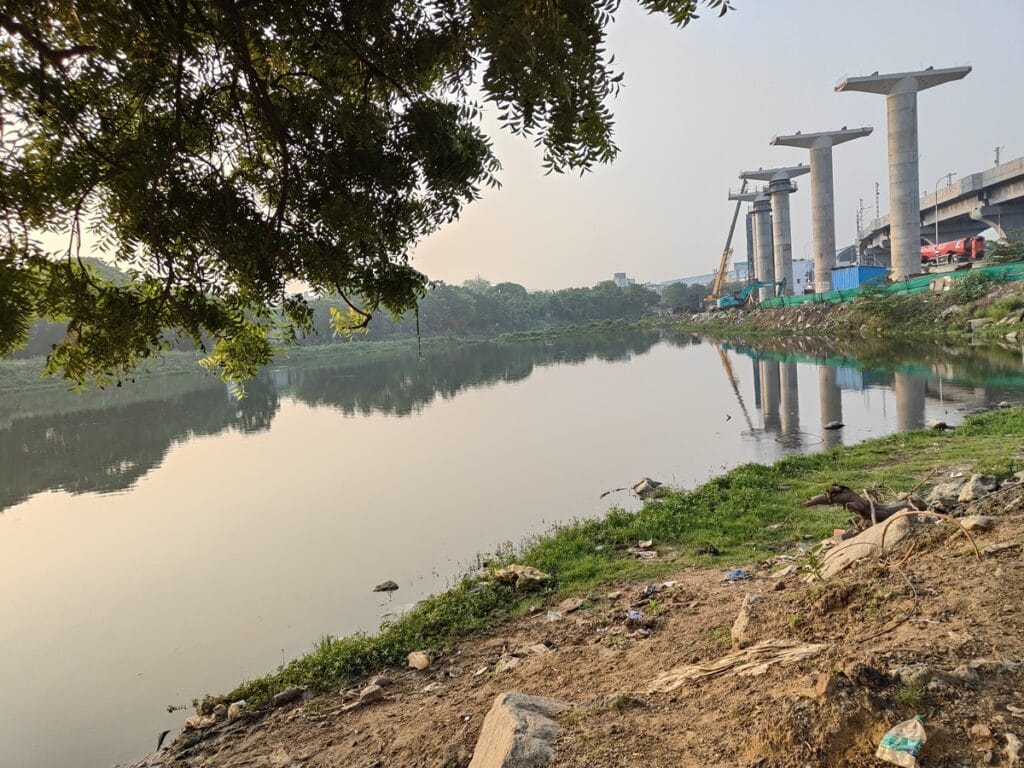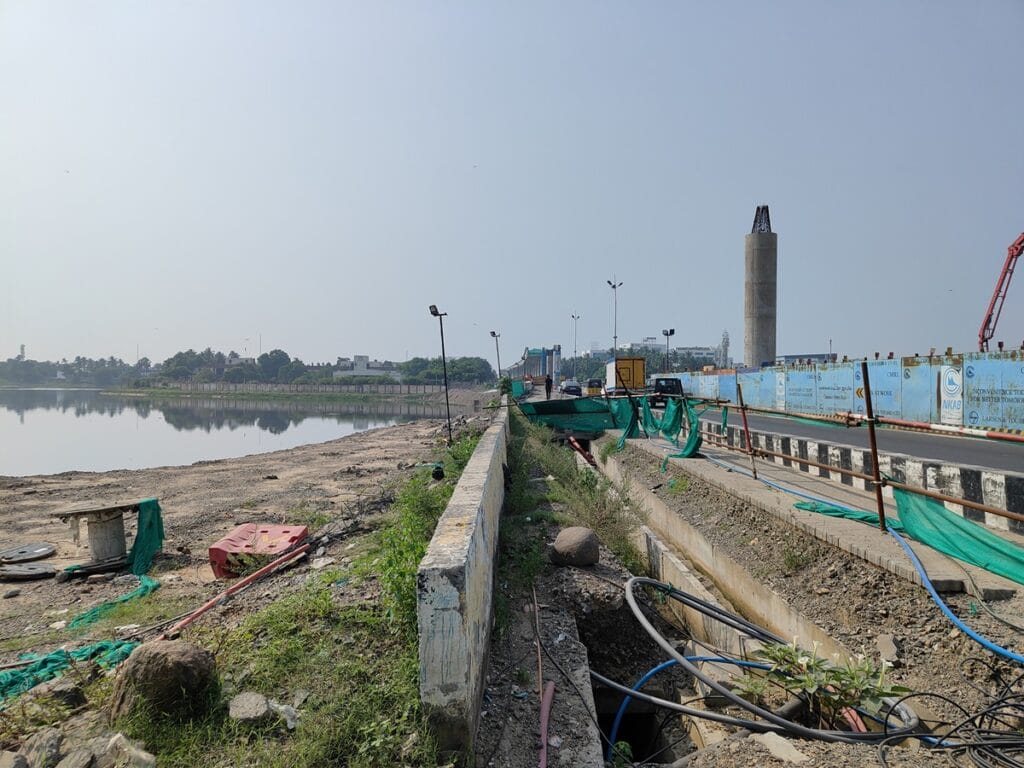Many of us who have lived in Chennai for years have probably crossed Pallikaranai Marshland at least once. Yet, we often overlook that we are passing through an area that was once ecologically rich and a haven for diverse species.
But the marshland, one of the few coastal aquatic habitats in India to qualify as a wetland, is now just a shadow of its former self. Unchecked encroachments and rampant urbanisation have drastically reduced the catchment area of Pallikaranai Marsh. With the Northeast monsoon bringing rains to Chennai, residents are increasingly concerned about flooding. Experts point out that rejuvenating the wetland is crucial for the city’s flood mitigation efforts.
Benisha BM, a climate activist and co-founder of environment organisation Aram Thinai, explains, “In the 1700s, Pallikaranai Marsh had a direct link to the sea. This connection was severed in the 1800s with the construction of the Buckingham Canal, and a new hydrological system was introduced to drain excess water from the marsh into the Bay of Bengal via Okkiyam Madavu.”

In the 1990s, the marsh covered 2,450 hectares — about 70% of its original size. By the 2000s, it had shrunk further to 1,800 hectares, and after the development of the Old Mahabalipuram Road (OMR) IT Corridor, it was reduced to 900 hectares. By 2020, only 500 hectares remained.
Pallikaranai Marsh is one of the 94 wetlands identified under the National Wetland Conservation and Management Programme (NWCMP) and is the first wetland in Chennai to receive the Ramsar designation. However, of the remaining marshland, only 370 hectares have been officially recognised as Ramsar sites.
Despite this recognition, the marsh now has only 10% of its original water-holding capacity, primarily due to encroachments from large-scale developments such as IT parks, residential complexes, and unregulated waste dumping.
Wetland tour highlights the significance of Pallikaranai
Meanwhile, the socio-economically marginalised communities that contribute the least to climate change, are the most affected by its consequences. This underscores the importance of viewing environmental issues through an intersectional lens. Aram Thinai’s experiential tours, such as the Wetland Tour, encourage rethinking the city’s development plans, while shedding light on the environmental and social challenges of the Pallikaranai watershed, a vital floodplain for South Chennai.
“I crossed Pallikaranai Marsh almost every day during my college years, yet I was unaware of its ecological significance or the lakes around its watershed,” says Jeffery Immanuel, a participant in the Wetland Tour organised by Aram Thinai recently. Many others shared this revelation during the tour, when confronted with the alarming state of the Pallikaranai watershed.
Read more: Pallikaranai is struggling to survive, and so is life around it
The shrinking lakes of Pallikaranai watershed
Many lakes drain into the marsh, but waste dumping and encroachments have affected their size and health. For example, Velachery Lake, which spanned 265 acres in the 1970s, now covers only 55 acres, according to a 2017 report by the Comptroller and Auditor General of India.
Chennai’s First Master Plan classified these waterbodies as recreational spaces, but the area was later reclassified as residential. “With such changes in land use, the Tamil Nadu Housing Board buildings remain the major encroachers of Velachery Lake,” says Raju, a facilitator of the Wetland Tour.

During rains, the lakes remain a catchment area. When the water dries up, it becomes poromboke land, which the government considers a wasteland. “This buffer zone is used for dumping construction debris leading to further encroachment,” says Benisha, adding that even after the 2015 floods, the government has not understood the significance of poromboke land.

Environmental and social consequences
Chetpet Lake, which was once an important community space for potters, has been converted into an eco-park, displacing local livelihoods. A similar model was applied to Pallavaram Periya Eri, which originally covered 119 acres but was reduced to just 50 acres by 2015. The lake now suffers from encroachment, pollution, and untreated sewage, while communities in surrounding areas grapple with water scarcity.

Moreover, the Greater Chennai Corporation has been dumping waste in the 200-acre Perungudi landfill that borders the Pallikaranai Marsh, for decades. The resultant contamination of air, water and soil has significantly affected the local communities living in the vicinity.
The Wetland Tour participants, like eight-year-old IR Raisha, learn firsthand about the impact of waste dumping. “I learned that dumping garbage in the wetlands harms the birds and other animals, so we should stop doing it,” she says.

Development of the IT corridor
After creation of the Second Master Plan, government-sanctioned wetland encroachment started in Chennai with the establishment of an IT corridor.


Okkiyam Madavu itself has seen significant encroachments, reducing its capacity to carry water and contributing to flooding in areas like Thoraipakkam. “As Pallikaranai Marsh is a freshwater wetland, the threat of seawater intrusion due to rising sea levels, combined with ongoing pollution, could lead to the marsh turning saline,” notes Raju.
Impact on Pallikaranai Marshland’s bio-diversity
According to the Tamil Nadu Wetland Mission, the diverse ecosystem of the Pallikaranai marshland supports some 115 bird species, 10 mammals, 21 reptiles, 10 amphibians, 46 fish, nine molluscs, five crustaceans, and seven butterfly species.

However, a recent report in The Hindu noted a decline in migratory birds visiting the marsh, likely due to unseasonal rains and increasing development. “About 90% of the wetland has been encroached upon, and the habitat has been exponentially destroyed. During our interactions with locals, they recalled seeing turtle migrations. Earlier, there was so much wildlife that people could not go there,” says Deepak Venkatachalam, a naturalist and founder of Suzhal Arivom.
The Shollinganallur Elcot and Perumbakkam stretch was a wonderful habitat for migratory ducks. Setting up of several companies and other buildings almost destroyed this habitat. “Preliminary studies indicate that birds like Grey-headed Swamphens, Pheasant-tailed Jacana, and Bronze-winged Jacana have started adapting to pollution. Around 2010, the Bronze-winged Jacana was a rarity to Chennai but now it can be seen widely across the marshland. This could be due to the adaptation of the birds and not because of the habitat,” he adds.
Read more: Why do we see fewer migratory birds in Pallikaranai?
Historical inequities and development

The history of Pallikaranai Marsh and its surrounding areas reflects a pattern of social marginalization. During the colonial era, the city was divided into the affluent White Town and the working-class Black Town. This divide persists today, as marginalized communities continue to be pushed to the fringes of the city, with areas like Perumbakkam and Semmenchery being built on former wetlands. These communities are increasingly vulnerable to flooding, even from brief rainfall.
Benisha notes, “Despite 78 years of Independence, the socio-economically marginalized are still pushed to the peripheries, facing environmental challenges like flooding, poor sanitation, and inadequate infrastructure.”
Rethinking urban development for the future
The recent flooding seems to have awakened the government to take measures to save the wetland, as a a high-level bridge has been proposed from Kamatchi Hospital to Thoraipakkam. However, despite the Ramsar site declaration, the Tamil Nadu State Wetland Authority is yet to share details about the boundary and survey numbers of the area with CMDA, leaving it unable to make appropriate changes to the Second Master Plan. Meanwhile, the authority has undertaken a bathymetric study in and around Pallikaranai marshland to assess the volume of sludge that can be dredged to enhance the marsh’s water-holding capacity and ecological functions.
As Chennai works on its Third Master Plan, it is crucial to reassess the role of wetlands like Pallikaranai in the city’s future. “Understanding the problem is key to bringing a solution. It’s time to rethink our approach to urban development,” says Karthik G of Aram Thinai.